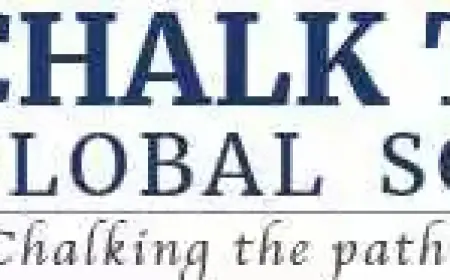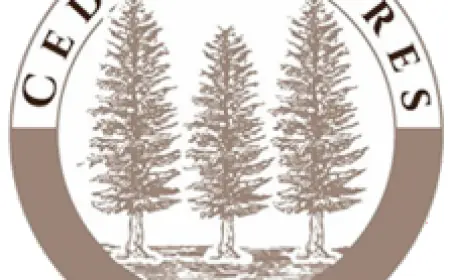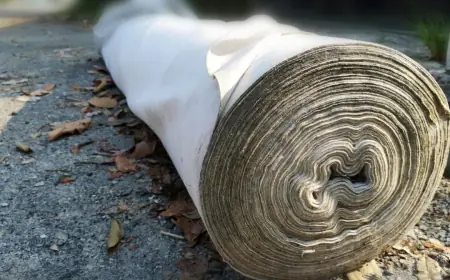Wired Drill Pipe Market 2030: Size, Industry Growth & Top Companies Overview
Industry Key Highlights
Market Size and Growth Trajectory
According to a TechSci Research report titled “Wired Drill Pipe Market – Global Industry Size, Share, Trends, Competition Forecast & Opportunities, 2030F,” the global wired drill pipe (WDP) market was valued at approximately USD 2.4 billion in 2024. Projections anticipate reaching USD 3.4 billion by 2030, reflecting a compound annual growth rate (CAGR) near 5.9%. These numbers underscore the steady momentum as the industry underscores efficiency, data fidelity, and risk mitigation as central to modern drilling operations.
Request For Sample Copy of Report For More Detailed Market insight: https://www.techsciresearch.com/sample-report.aspx?cid=29734#requestform
Primary Drivers
-
Efficiency and Safety Gains: Wired drill pipes excel at transmitting real-time data from downhole components to surface control systems. Armed with instant feedback, operators can fine-tune drilling parameters immediately, helping to avoid costly issues like wellbore instability, stuck pipe events, and drilling delays. This proactive control enhances rig uptime and upholds safety standards.
-
Rising Hydrocarbon Demands: A global appetite for oil and gas exploration—particularly in remote, offshore, and unconventional fields—places WDP technology front and center. When drilling in challenging terrains or deeper strata, traditional drill pipes tend to underperform. In contrast, WDP systems support more precise and reliable operations.
-
Digital Transformation Imperative: Oil and gas companies across the globe are integrating their operations into broader digital platforms. WDPs represent a cornerstone of this transformation, enabling data-driven decisions, remote collaboration between on-site and off-site teams, and predictive maintenance—hallmarks of the modern digital oilfield.
-
Environmental and Sustainability Pressures: As the energy sector embraces net-zero and carbon-footprint reduction goals, WDPs shine by improving drilling accuracy, reducing non-productive time (NPT), and minimizing unnecessary environmental impact. Fewer re-drills, optimized paths, and diminished waste all serve sustainability agendas.
Browse over XX market data Figures spread through XX Pages and an in-depth TOC on the "Global Wired Drill Pipe Market"@https://www.techsciresearch.com/report/wired-drill-pipe-market/29734.html
Functional Architecture and Application
Wired drill pipes consist of robust drill string assemblies equipped with embedded communication wiring, sensors, connectors, and sometimes slim telemetry modems. This architecture enables a continuous flow of data—pressure, temperature, torque, vibration—from the bottom of the hole to surface operations. As drilling depths increase and formations become more complex, this telemetry becomes mission‑critical for well planning, geosteering, and safety assurance.
Material Composition Breakdown
-
Steel WDPs: Traditional, high-strength, and familiar to operators. Cost‑effective, though heavier and less resistant to corrosion or fatigue at extreme depths.
-
Alloy WDPs: Specialized steel variants with enhanced corrosion resistance or strength. Priced higher than standard steel with a narrower market yet suitable to specific niche uses.
-
Composite WDPs: Composite materials dominate the WDP space, offering unparalleled weight savings, corrosion resistance, and compatibility with high‑temperature, high‑pressure drilling environments.
Material Segment Spotlight: Composites
Within the diverse material palette, composite wired drill pipes stand out as the market leader in 2024—and show no signs of stepping down. The rationale for this supremacy lies in several critical performance dimensions:
-
Weight Advantage
Composite pipes are significantly lighter than steel equivalents. This translates to lower energy usage, reduced rig-side load, and faster drill tripping cycles. In offshore operations—where weight equals cost—these savings compound quickly. -
Fatigue and Corrosion Resistance
Drilling environments, especially those rich in corrosive fluids or sour gas, take a heavy toll on materials. Composites resist corrosion far better than steel. Their structural toughness helps resist cyclic fatigue, supporting reliable performance over time. -
Enhanced Downhole Data Integrity
Embedded wiring within composite walls is shielded from heat, abrasion, and corrosion. As an intact channel for high-rate telemetry, composites ensure dependable real-time monitoring—empowering responsive adjustments to maintain wellbore integrity. -
Higher Drilling Performance
Composite drills offer high torque-to-weight ratios—meaning improved performance in high dogleg severity directional drilling—and extended reach without sacrificing pipe durability. -
Operational Sustainability
With weight reduction, energy savings, and fewer re-drills, composites align with environmental goals and lifecycle cost optimization. -
Cost Efficiency Over Lifecycle
Though the upfront cost per meter is higher than steel, composites pay back via lower transport/fuel costs, fewer maintenance interventions, and extended mean time between failures (MTBF). -
Adaptability to HPHT and Unconventional Geologies
Composites hold up well under high-pressure, high-temperature (HPHT) conditions and in unconventional wells—regions that are increasingly central to new exploration plays. -
Enabling Technological Integration
Composites facilitate seamless integration with sensors, memory points, or RF/data modems, making the drill string smart by design.
For these reasons, the composite segment is expected to maintain its dominance throughout the forecast period.
Regional Landscape: Asia Pacific Surges Ahead
Why Asia Pacific Leads
Among global markets, Asia Pacific stands out as the fastest-growing region in WDP adoption, fueled by several converging factors:
-
Rapid Energy Expansion: Emerging economies like China, India, and Indonesia are aggressively chasing energy independence—leading to spiked investments in upstream infrastructure.
-
Geological Imperatives: Offshore reserves, unconventional gas (e.g., coal-bed methane, tight gas), and deepwater resources require advanced tools like WDPs.
-
Governmental Support Policies: Liberalized licensing regimes—including India’s Open Acreage Licensing Policy (OALP) and offshore tenders in Australia—stimulate exploration and yield increased WDP uptake.
-
Collaborative Technology Transfers: Multinational oilfield service firms are partnering with local operators, enabling technology transfer and faster market penetration.
-
Cost-Efficient Adoption Culture: In pursuit of lower costs per barrel, regional operators are embracing data‑rich drilling to cut NPT and enhance yield efficiency.
Market Forecast in Asia Pacific
With the aforementioned tailwinds, Asia Pacific’s share in global WDP installations is set to rise. Mid-term forecasts expect double‑digit regional CAGRs—further amplified by government emphasis on domestic resource development.
Competitive Landscape: Major Players and Strategies
The global WDP space is shaped by several key industry participants, each contributing distinctive competencies:
-
National Oilwell Varco (NOV): As a global leader in drill pipe manufacture, NOV emphasizes modularity, quality control, and intelligent connectivity solutions.
-
Schlumberger Limited: CMD-enabled WDPs integrated with OneSubsea and digital oilfield solutions support real-time analytics, predictive modeling, and remote operations.
-
Baker Hughes Company: Baker Hughes links its WDP assets with autonomous drilling parameter adjustments and cloud-based data processing platforms.
-
Halliburton Company: Offers WDP services integrated with its Landmark platform, providing end-to-end drilling optimization across global basins.
-
Weatherford International plc: Investing in cost-effective WDP solutions for mid-tier markets and providing bundled drilling optimization offerings.
-
Superior Drillpipe Manufacturing, Inc.: Focuses on high-spec WDPs for rig refurbishment, aftermarket demand, and customized engineering.
-
IntelliServ, LLC: A pioneer in wired pipe telemetry, enabling high-speed data transmission via integrated sensor and cable technologies.
-
Scientific Drilling International, Inc.: Specializes in customized WDP strings and real-time modeling.
Each player advances through high-performance metallurgy, sensor innovation, digital analytics, and value-based service models.
Emerging Trends
Trend 1: AI-Driven Real-Time Analytics
Combining WDP telemetry with machine learning sets the stage for predictive drilling optimization. For example, noticing early signs of stick-slip or torque spikes allows the rig to adjust parameters autonomously—boosting efficiency and averting hazards.
Trend 2: Decentralized Operations via Cloud Platforms
WDP data is now feeding into secure cloud ecosystems, enabling remote drilling oversight and collaboration among global teams—especially critical in the post-pandemic operational landscape.
Trend 3: Subscription & Service-Based Models
Major upstream service providers are transitioning toward WDP-as-a-Service. This model offers turnkey access—covering hardware, data management, and analysis—without requiring substantial upfront capital.
Trend 4: Materials Innovation and Hybrid Pipes
Research into hybrid combinations—metal‑composite blends or coatings—are delivering pipes with tailored mechanical and conductive properties, drawing curiosity from both manufacturers and end-users.
Trend 5: Sustainability Alignment
Governments and regulators are pushing the oil and gas sector toward more transparent emissions accounting. WDPs support this drive by improving drilling efficiency, cuttings management, and waste reduction, thus reinforcing ESG strategies.
Drivers Behind Market Expansion
-
Rising Exploration Complexity: More offshore, deepwater, HPHT, and unconventional drilling means conventional steel pipe systems are increasingly inadequate. WDPs fill that technological gap.
-
Risk and Cost Reduction: The cost of a stuck pipe event or sidetrack can reach millions; real-time data from WDPs drastically reduces such incidence.
-
Operational Standardization: Industry standards (e.g., IOGP, API) are evolving to endorse smart pipe systems in drilling.
-
Global Energy Security Needs: Nations aiming for energy independence are turning to advanced drilling technologies to unlock their local resources faster.
-
Digital Oilfield Investments: Over USD 50 billion is being allocated globally to digital oilfield initiatives, with WDPs playing a core role.
Customers can also request for 10% free customization on this report.
Conclusion
The wired drill pipe market stands at a transformative crossroads. With a projected global value of USD 3.4 billion by 2030, its future is powered by twin revolutions—digital transformation and advanced materials. Composite pipes dominate now, supported by their operational elegance, weight economy, and resistance to corrosive conditions. Asia Pacific fuels growth with its aggressive exploration footprint.
Looking ahead, the real game-changer will be how telemetry, artificial intelligence, and materials innovation converge. Service-as-a-model offerings will democratize access, while hybrid pipes, predictive algorithms, and remote operations will redefine what efficient, safe, and sustainable drilling means.
The 10-point report encapsulates a wealth of intelligence—from segmented market outlooks to competitor maps, policy environments, and long-term strategic insights—making it a valuable compass for stakeholders across the value chain.
Contact US:
Techsci Research LLC
420 Lexington Avenue, Suite 300,
New York, United States- 10170
Tel: +13322586602
What's Your Reaction?
 Like
0
Like
0
 Dislike
0
Dislike
0
 Love
0
Love
0
 Funny
0
Funny
0
 Angry
0
Angry
0
 Sad
0
Sad
0
 Wow
0
Wow
0













































